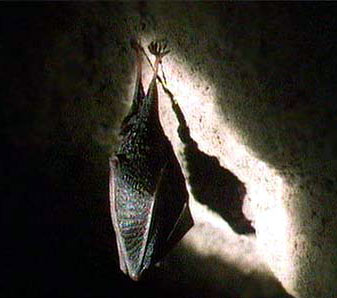|
Batscapes
North Somerset Wildlife Wardens, Judith Tranter, David Glynn, Tony Moulin and Terry Smith, attended a meeting at Newton St Loe on 16th November to celebrate the success of the Batscapes project, which ends in December.
This project was developed primarily to cover the B&NES and South Gloucestershire council districts and aimed to involve the local community in the protection of horseshoe bats and the landscape features that support them.
One objective was to recruit parish bat wardens and, although North Somerset Council did not participate directly, the NS Wildlife Wardens were invited to promote the bat warden role. Indeed one of the slides suggested that there are now more parish bat wardens in N. Somerset than in S. Glos!
Dan Merrett, B&NES, acted as the excellent project manager for Batscapes, assisted by Mark Smith, FWAG (Farming & Wildlife Advisory Group), and Craig Stenson, Avon Wildlife Trust, as field officers who formed links with farmers and landowners.
They have been supported by a large group of bat enthusiasts who have been provided with regular training on habitat and bat identification, alongside surveying and bat detection techniques. Funding for the project was largely through a significant grant of £170k from the Heritage Lottery Fund, with further support from English Nature (now Natural England), B&NES, S Glos, BRERC (Bristol Regional Environmental Records Centre ) and the Duchy of Cornwall.
The project has been deemed an outstanding success, with achievements including habitat improvement and protection by landowners, positive cooperation with planning officers, preparation of tree worker guidance and the parish bat warden network, all resulting in a greatly increased knowledge base and positive outlook for the threatened horseshoe bats, for which the South West is the last remaining stronghold in the UK. In fact, there are now just 7000 greater horseshoe bats in the UK, only 1% of the population one hundred years ago.
We were given an impressive display of the achievements of the project in a presentation by Dan and Craig, with contributions on the importance attached to this work by those who funded the scheme. Lunch was provided by the Duchy of Cornwall in rather magnificent surroundings, and this gave a good opportunity for some intensive networking. Work on the project will continue through the Avon Bat Group and, of course, with the Wildlife Wardens, with others studying the distribution of dormice through further funding.
If you have an interest in the Batscapes project, or just want to know more about bats, please contact us (see below), or the Avon Bat Group (David Brown, email: batnovice@yahoo.co.uk).
Terry Smith (t.a.smith@blueyonder.co.uk)
David Glynn (david.glynn@care4free.net)
Relevant websites
www.bio.bris.ac.uk/research/bats/britishbats/batpages/greaterhorseshoe.htm
www.bbc.co.uk/nature/wildfacts/factfiles/285.shtml
www.fwag.co.uk/
www.brerc.org.uk/
www.avonwildlifetrust.org.uk/
|


